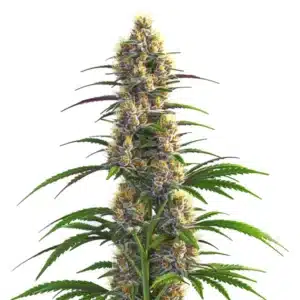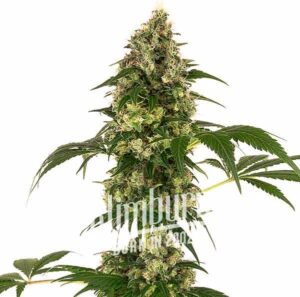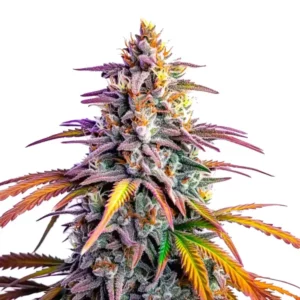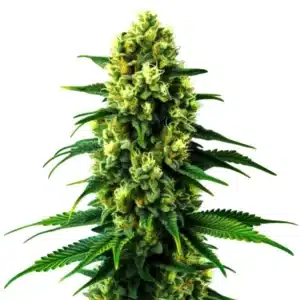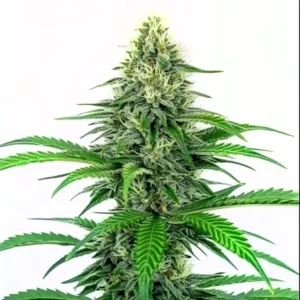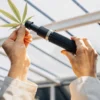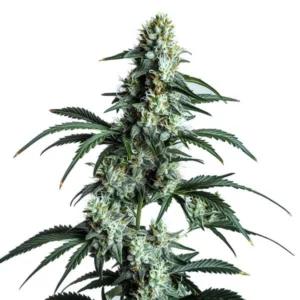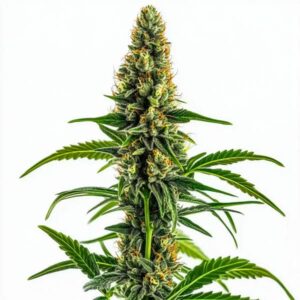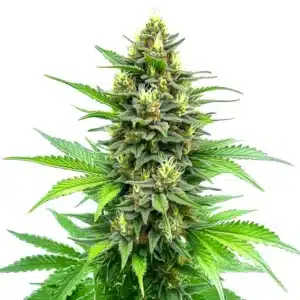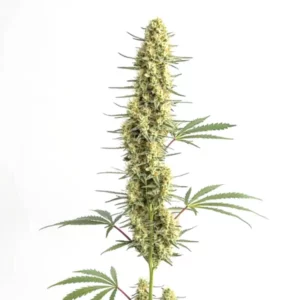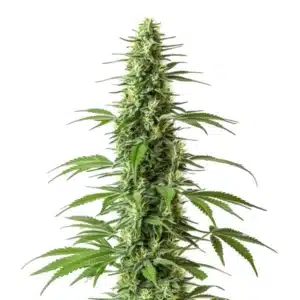
Best Enzymes for CBG-to-CBD Conversion
When it comes to harnessing the full potential of cannabis, knowing the best enzymes for CBG-to-CBD conversion can be a game-changer. For both first-time cannabis seed buyers and seasoned growers, knowing how to maximize the transformation of CBG into CBD can lead to a more potent and beneficial product. CBD, known for its relaxing and anti-inflammatory properties, begins its journey as cannabigerol (CBG), often referred to as the “mother cannabinoid.”
In the quest for the most effective enzymes for CBG to CBD conversion, it’s essential to understand which enzymes can enhance this transformation. These enzymes work like skilled artisans, meticulously converting CBG into CBD. With the right enzymes, growers can optimize their harvest and boost the therapeutic properties of their cannabis plants. The top enzymes for converting CBG to CBD play a crucial role in ensuring that the end product is both high-quality and efficient in delivering its benefits.
Recommended Strains
CBD Zenergy
|
|
CBD | 10% – 24% (Medium) |
|
|
Type | CBD Feminized |
|
|
Yield | Medium |
|
|
Phenotype | 40% Indica / 60% Sativa |
Afghan x Haze
|
|
THC | 22% - 25% (Medium) |
|
|
Type | Feminized |
|
|
Yield | Medium |
|
|
Phenotype | 40% Indica / 60% Sativa |
Choosing the optimal enzyme choices for CBG to CBD conversion can significantly impact the quality and effectiveness of your cannabis. Enzymes act as catalysts, expediting the conversion process and ensuring that it happens smoothly. By selecting the best enzymes for CBG-to-CBD conversion, growers can ensure a more consistent and reliable end product, ultimately leading to a more rewarding cultivation experience.
How Enzymes Facilitate CBG to CBD Conversion
Enzymes are biological molecules that speed up chemical reactions. In the context of cannabis, specific enzymes are responsible for converting CBG into CBD. This conversion is crucial because while CBG is valuable, CBD is often more sought after for its wide range of therapeutic applications.
CBG-to-CBD conversion enzyme recommendations often point to specific enzymes that have been identified as particularly effective in this process. These enzymes work by breaking down the molecular structure of CBG and rearranging it to form CBD, a process that might seem complex but is crucial for maximizing the benefits of cannabis.
The process of conversion from CBG to CBD is not only about the chemical reaction but also about maintaining the integrity of the plant’s natural properties. By focusing on enzymes that enhance CBG to CBD transformation, cultivators ensure that the plant’s potency is preserved. This results in a more effective product that retains the therapeutic qualities cannabis is known for.
Knowing the function of enzymes in this conversion process also allows growers to experiment with different methods of application. Whether through natural development within the plant or through external additions, the use of enzymes can be tailored to fit specific growing conditions and desired outcomes. This adaptability is part of what makes enzymes a powerful tool in modern cannabis cultivation.
Top Enzymes for Converting CBG to CBD
To get the most out of your cannabis plants, it’s essential to use the right enzymes. Some of the top enzymes for converting CBG to CBD include those that naturally occur in the plant and those that can be introduced externally. These enzymes ensure that the conversion process is efficient and complete, leading to a higher yield of CBD.
One of the most effective enzymes for CBG to CBD conversion is cannabigerol acid synthase (CBGA synthase). This enzyme plays a pivotal role in the initial stages of the conversion process, setting the stage for the transformation of CBG into CBD. By facilitating this conversion, CBGA synthase helps maximize the potency and efficacy of the final product.
Another enzyme that enhances CBG to CBD transformation is CBD synthase. This enzyme directly influences the conversion process by catalyzing the reaction that turns CBG into CBD. By using CBD synthase, growers can ensure that more CBG is transformed into CBD, increasing the overall yield and quality of their cannabis.
Besides to CBGA synthase and CBD synthase, other enzymes have shown potential in promoting CBG to CBD conversion. These include enzymes that might not directly convert CBG but aid in maintaining a balanced environment for the conversion process. These supportive enzymes ensure that the primary enzymes can function at their best, further optimizing the conversion efficiency.
For growers seeking the most effective enzymes for CBG to CBD conversion, it’s beneficial to explore enzyme combinations that can synergize to enhance the overall transformation process. By experimenting with different enzyme ratios and application methods, cultivators can discover the optimal enzyme choices for CBG to CBD conversion that suit their specific strains and cultivation conditions.
Promos & Deals
Practical Applications and Real-Life Examples
For those just starting with cannabis cultivation, knowing how to apply enzymes for CBG to CBD conversion can seem daunting. However, with a few practical steps, it becomes much easier. Incorporating these enzymes into your growing process can significantly enhance the quality of your cannabis.
Consider using strains like Critical CBD from Blimburn Seeds, which is known for its high CBD content. By using the best enzymes for CBG-to-CBD conversion, you can increase the CBD yield and enhance the therapeutic effects of this strain. This practical approach ensures that even novice growers can achieve high-quality results.
Experienced growers often share their successes with enzyme use, providing valuable insights into the best practices for CBG to CBD conversion. By learning from these real-life examples, new cultivators can avoid common pitfalls and accelerate their learning curve. This exchange of knowledge is vital in advancing the collective knowing of enzyme application in cannabis cultivation.
Incorporating enzymes into the cultivation process is not only about boosting CBD yield but also about enhancing the overall quality of the cannabis. By focusing on the most effective enzymes for CBG to CBD conversion, growers can ensure that their plants produce cannabis that meets the highest standards of potency and therapeutic benefit, catering to an increasingly discerning market.
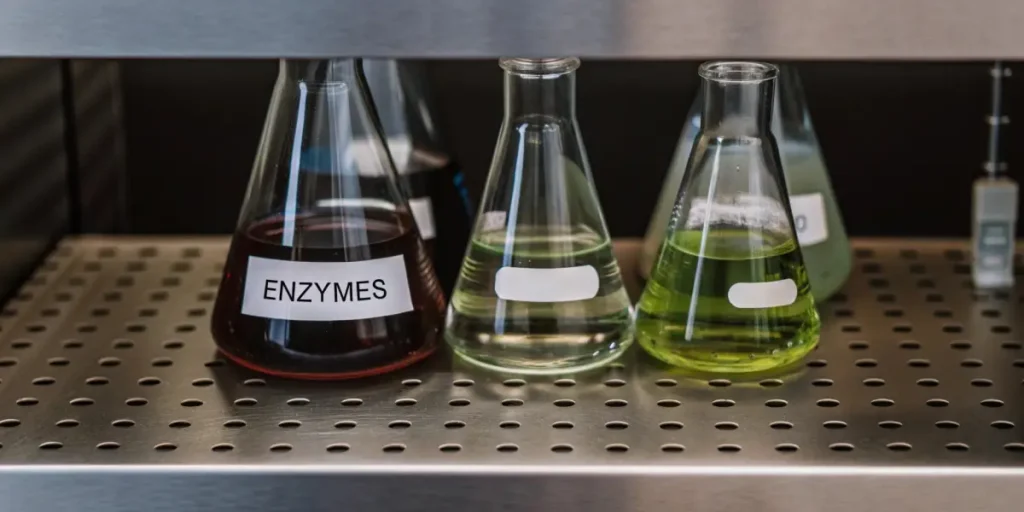
Strains That Benefit from Enhanced Enzyme Use
Some strains are naturally more suited to enzyme enhancement. For instance, the Mamba Negra CBD strain from Blimburn Seeds is an excellent candidate for enzyme use. Its genetic makeup allows it to respond well to enzymes, resulting in a higher CBD content and a more potent product.
Another strain to consider is the Sour Diesel CBD from Blimburn Seeds. Known for its unique flavor and high CBD levels, using enzymes can further boost its CBD conversion, making it a favorite among growers looking to maximize their yield. By applying the most effective enzymes for CBG to CBD conversion, you can enhance the natural properties of this strain.
By selecting the right strains for enzyme application, growers can tailor their cultivation practices to achieve specific goals. Strains that are responsive to enzymes often show a marked improvement in both yield and quality, offering a more robust therapeutic effect. This targeted approach allows growers to meet the demands of a market increasingly focused on quality and efficacy.
Moreover, the use of enzymes in responsive strains can lead to innovations in product development. By maximizing the CBD content in these strains, growers can produce cannabis products that cater to niche markets, such as those seeking high-CBD products for medical purposes. This not only broadens the market reach but also enhances the reputation of the grower as a producer of high-quality cannabis.
Common Challenges and Solutions
While using enzymes can greatly enhance the CBG to CBD conversion, there are challenges that growers might face. One common issue is ensuring that the enzymes are applied correctly and in the right amounts. Too much or too little can affect the conversion process and the quality of the final product.
To overcome these challenges, it’s important to follow the CBG to CBD conversion enzyme recommendations meticulously. This might include adhering to specific dosages, application times, and environmental conditions. By doing so, growers can ensure that they are getting the most out of their enzymes and maximizing their CBD yield.
Another challenge that growers may encounter is the variability in enzyme effectiveness due to environmental factors. Temperature fluctuations, pH imbalances, and other external conditions can impact enzyme activity and, consequently, the conversion rate from CBG to CBD. Addressing these variables is crucial for maintaining enzyme efficiency.
By investing in the right equipment and monitoring systems, growers can maintain optimal conditions for enzyme activity. This proactive approach not only mitigates potential challenges but also enhances the overall success of the cultivation process, ensuring that the best enzymes for CBG-to-CBD conversion are utilized to their full potential.
Strategies for Successful Enzyme Application
Successful enzyme application involves a few key strategies. First, it’s crucial to understand the specific needs of your cannabis strains. Different strains may require different enzymes or application methods. Researching and knowing these needs can lead to more successful outcomes.
Additionally, maintaining the right environmental conditions can significantly impact the effectiveness of enzyme application. Enzymes often require specific temperatures and pH levels to function optimally. By monitoring and adjusting these conditions, growers can ensure that their enzymes are working at their best.
Implementing a trial-and-error approach can also help growers refine their enzyme application techniques. By testing different enzyme combinations and observing the results, cultivators can determine the optimal enzyme choices for CBG to CBD conversion specific to their strains. This iterative process is crucial for achieving the desired outcomes in cannabis cultivation.
Moreover, growers should consider collaborating with other cultivators or industry experts to exchange knowledge and experiences. This collaborative approach can lead to new insights and innovations in enzyme use, further advancing the field of cannabis cultivation and ensuring that growers are using the most effective enzymes for CBG to CBD conversion.
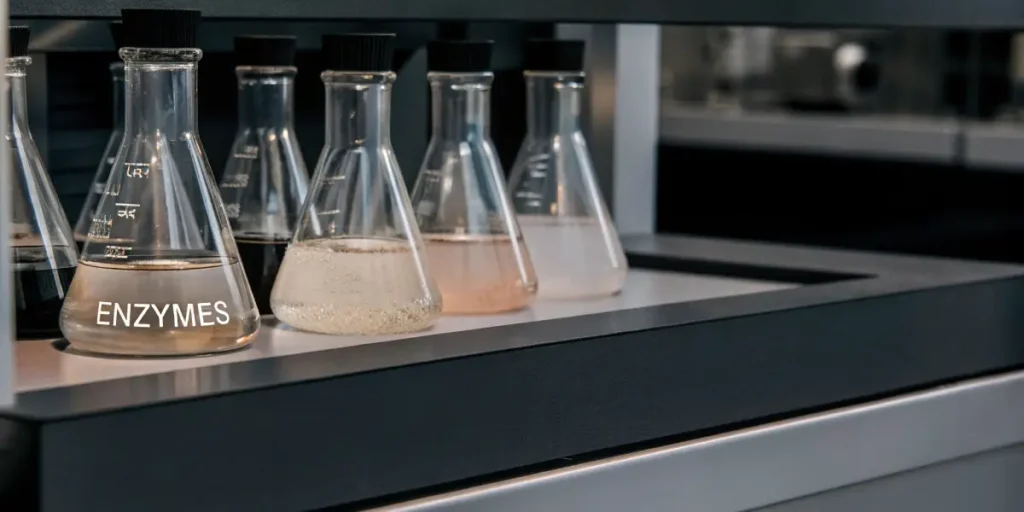
FAQs
What are the best enzymes for CBG-to-CBD conversion?
The best enzymes for CBG-to-CBD conversion include CBGA synthase and CBD synthase. These enzymes play a crucial role in the conversion process, ensuring that the transformation from CBG to CBD is efficient and complete. By using these enzymes, growers can enhance the quality and potency of their cannabis plants.
CBGA synthase is particularly important in the early stages of the conversion process, setting the foundation for CBD production. CBD synthase, on the other hand, directly influences the transformation of CBG into CBD, ensuring a higher yield of this sought-after cannabinoid. Together, these enzymes form a powerful combination for optimizing cannabis cultivation.
Choosing the right enzymes for your specific cultivation conditions can be the deciding factor in achieving optimal results. By focusing on the most effective enzymes for CBG to CBD conversion, growers can align their cultivation practices with their overall goals, whether they are targeting higher yield or enhanced therapeutic benefits.
Additionally, knowing the function of these enzymes in the broader context of plant metabolism can offer new perspectives on how to enhance not just CBD production, but the overall health and vigor of the cannabis plant. This holistic approach ensures that growers are not only meeting their immediate cultivation goals but also contributing to the long-term sustainability of their growing practices.
How do enzymes enhance CBG to CBD transformation?
Enzymes enhance CBG to CBD transformation by acting as catalysts in the conversion process. They speed up the chemical reactions required to transform CBG into CBD, resulting in a more efficient and complete conversion. This leads to a higher yield of CBD and a more potent final product.
By using enzymes that enhance CBG to CBD transformation, growers can ensure that their cannabis plants are reaching their full potential. This not only improves the quality of the cannabis but also maximizes its therapeutic benefits, making it more effective for consumers.
The catalytic nature of enzymes means that they can significantly reduce the time required for the conversion process, allowing for quicker harvests and more efficient production cycles. This efficiency is particularly important for commercial growers looking to maximize output and profitability.
Furthermore, employing the top enzymes for converting CBG to CBD can result in a more predictable and consistent product, which is crucial for maintaining quality standards in both medical and recreational cannabis markets. By ensuring that enzyme activity is optimized, growers can deliver products that consistently meet consumer expectations.
Are there specific strains that benefit more from enzyme use?
Yes, certain strains are more responsive to enzyme use and can benefit greatly from it. For example, strains like Critical CBD, Mamba Negra CBD, and Sour Diesel CBD from Blimburn Seeds are known for their high CBD content and can be further enhanced with enzyme application.
These strains have genetic profiles that make them ideal candidates for enzyme use, allowing growers to maximize their CBD yield and enhance the overall quality of their cannabis. By choosing strains that are responsive to enzymes, growers can achieve better results and more potent products.
The genetic factors that make some strains more amenable to enzyme enhancement include their natural inclination to convert CBG to CBD efficiently, as well as their overall robustness and resilience. By knowing these genetic traits, growers can make informed decisions about which strains to cultivate and how to best utilize enzymes in the process.
Moreover, selecting strains with proven responsiveness to enzyme applications allows growers to push the boundaries of what is achievable in terms of cannabinoid content and plant quality. This strategic approach not only benefits the grower but also enriches the consumer experience with superior products.
What challenges might growers face when using enzymes?
Growers might face challenges such as ensuring the correct application of enzymes in terms of dosage and timing. Applying too much or too little enzyme can affect the conversion process and the quality of the final product. Additionally, maintaining the right environmental conditions is crucial for enzyme effectiveness.
To overcome these challenges, it’s important for growers to follow CBG to CBD conversion enzyme recommendations carefully. By adhering to guidelines and monitoring conditions such as temperature and pH levels, growers can ensure that their enzymes are working optimally and that they are maximizing their CBD yield.
Another potential challenge is the cost associated with enzyme procurement and application. While enzymes can significantly enhance production, they also represent an investment that needs to be justified by the resulting yield and product quality. Careful budgeting and resource management are essential to ensure that the benefits outweigh the costs.
Additionally, growers must stay informed about new developments and research in enzyme use. The field of cannabis cultivation is rapidly evolving, and staying abreast of the latest advancements can provide growers with innovative solutions to common challenges, ensuring that they are always using the best enzymes for CBG-to-CBD conversion.
How can growers optimize their use of enzymes?
Growers can optimize their use of enzymes by knowing the specific needs of their cannabis strains and maintaining the right environmental conditions. Researching enzyme requirements and adjusting application methods can lead to more successful outcomes.
Additionally, growers should keep track of the results and make adjustments as needed. By observing how their plants respond to enzyme application, they can tweak their approach to achieve the best results. This ongoing process of observation and adjustment ensures continuous improvement and maximum benefits from enzyme use.
Implementing a structured approach to enzyme application, such as creating detailed records of enzyme types, application methods, and plant responses, can provide valuable data for future cultivation. This systematic documentation helps in refining techniques and making informed decisions in subsequent growing cycles.
Furthermore, engaging in community forums or professional networks can offer additional insights and tips for optimizing enzyme use. By collaborating with other growers and researchers, cultivators can gain access to a wealth of knowledge and experience, enhancing their own practices and contributing to the advancement of the industry as a whole.


